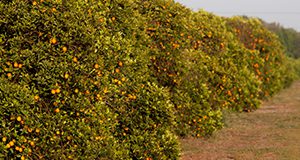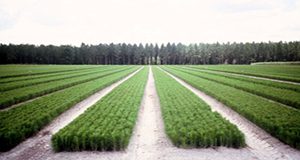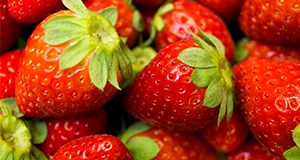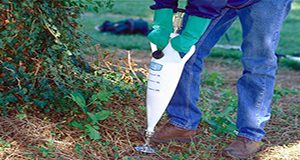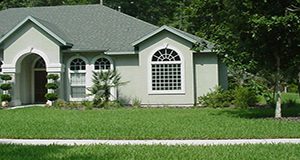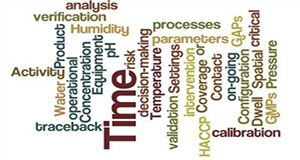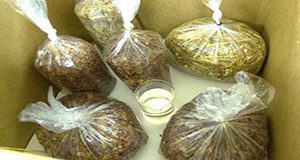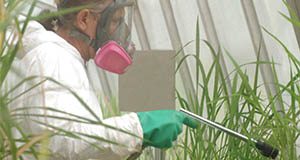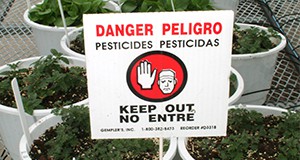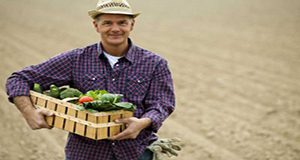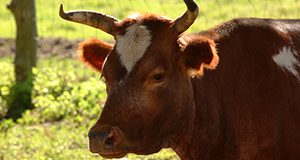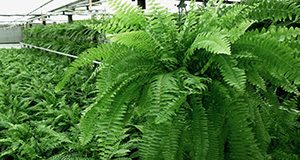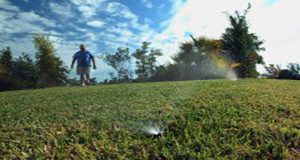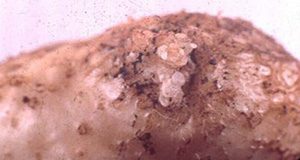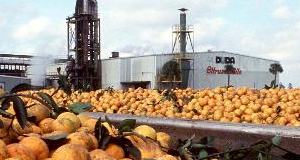Plant growth regulators (PGRs) are a tool used to manipulate vegetative and reproductive growth, flowering, and fruit growth and development. PGRs have been successfully used in agriculture for decades to amend plant growth characteristics to maximize yield and grower profit. This new 4-page fact sheet discusses auxins, gibberellins, cytokinins, abscisic acid, ethylene, new classes of plant hormones, use of PGRs for HLB-affected trees, and general considerations for PGR use in Florida citrus groves. Written by Tripti Vashisth, Chris Oswalt, Mongi Zekri, Fernando Alferez, and Jamie D. Burrow, and published by the UF/IFAS Horticultural Sciences Department, February 2018.
http://edis.ifas.ufl.edu/hs1310
Category: Agriculture
Genetically Improved Pines for Reforesting Florida's Timberlands
Just as farmers plant the best-available varieties of crops that have been developed through many generations of breeding, forest landowners should plant the best-available genetically improved varieties of pines for reforestation of their timberlands. This 8-page fact sheet written by Timothy L. White, Mary L. Duryea, and Gregory L. Powell and published by the UF/IFAS School of Forest Resources and Conservation explains how planting genetically improved varieties of pines can increase the productivity, health, and value of reforested Florida timberlands.
edis.ifas.ufl.edu/fr007
An Overview of Strawberry Production in Mexico
This 5-page fact sheet written by Feng Wu, Zhengfei Guan, J. Jaime Arana-Coronado and Melvin Garcia-Nazariega and published by the UF/IFAS Food and Resource Economics Department provides an overview of Mexican strawberry production with an emphasis on the production in Central Mexico.
http://edis.ifas.ufl.edu/fe1014
Pesticide Injection and Drenching
Drenching and injection are two pesticide application methods that are particularly effective in controlling some of the most troublesome insect pests of ornamental landscape trees. This 4-page document describes the equipment and procedures you will need to carry out either of these methods. Written by Frederick M. Fishel and published by the UF/IFAS Agronomy Department, January 2018.
http://edis.ifas.ufl.edu/pi274
La Grama St. Augustine para Patios de Florida
La grama o césped St. Augustine está muy adaptada a las zonas calurosas y húmedas (subtropicales) del mundo. Se cree que es nativa de las regiones costeras del Golfo de México y del Mediterráneo. St. Augustine es la especie de grama más usada en Florida. This is the Spanish-language version of ENH5/LH010, St. Augustinegrass for Florida Lawns. St. Augustinegrass is the most commonly-used lawn grass in Florida. This 10-page document describes its cultivation and management for Florida lawns. Written by L. E. Trenholm, J. B. Unruh, T. W. Shaddox, C. Balerdi, and H. Mayer and published by the UF/IFAS Department of Environmental Horticulture, January 2018.
http://edis.ifas.ufl.edu/ep552
HACCP: An Overview
HACCP is a food safety management system that is used in various segments of the food industry. The objectives of this 4-page fact sheet are to introduce the topic and to summarize the key components of a HACCP program. Written by J. A. Lepper, R. M. Goodrich-Schneider, K. R. Schneider, M. D. Danyluk and A. Sreedharan and published by the UF/IFAS Department of Food Science and Human Nutrition, January 2018.
http://edis.ifas.ufl.edu/fs122
D.I.Y. FunGuide: Grow Your Own Oyster Mushrooms at Home
Oyster mushrooms are commonly found on hardwoods throughout the north temperate zone; they are edible and have many nutritious qualities. This 5-page document describes how you can grow your own oyster mushrooms at home. Written by Chih-Ming Hsu, Khalid Hameed, Van T. Cotter, and Hui-Ling Liao and published by the UF/IFAS Department of Soil and Water Sciences, January 2018.
http://edis.ifas.ufl.edu/ss662
Isolation of Mother Cultures and Preparation of Spawn for Oyster Mushroom Cultivation
This 6-page publication details the cultivation of oyster mushrooms from mother culture isolation to spawn preparation. This protocol can be used by both homeowners and commercial cultivators. Written by Chih-Ming Hsu, Khalid Hameed, Van T. Cotter, and Hui-Ling Liao and published by the UF/IFAS Department of Soil and Water Sciences, January 2018.
http://edis.ifas.ufl.edu/ss663
Worker Protection Standard: Requirements for Commercial Pesticide Handler Employers
In 1992, the US Environmental Protection Agency issued a comprehensive regulation called the Worker Protection Standard for Agricultural Pesticides (WPS). The EPA has made several changes to the WPS since it was fully implemented in 1995. This 5-page document will address the WPS protections commercial pesticide handler employers must provide to their handlers. Written by Frederick M. Fishel and published by the UF/IFAS Agronomy Department, January 2018.
http://edis.ifas.ufl.edu/pi275
Worker Protection Standard: Requirements for Agricultural Employers of Workers and Handlers
Safety is a high concern for agricultural employers whose workers deal with hazardous materials, such as pesticides. In 1992, the US Environmental Protection Agency (EPA) issued the Worker Protection Standard for Agricultural Pesticides (WPS), a regulation that requires agricultural employers to take steps to reduce pesticide-related risks for their workers and handlers. This five-page document describes the responsibilities of employers who must adhere to the WPS. Written by Frederick M. Fishel and published by the UF/IFAS Agronomy Department, January 2018.
http://edis.ifas.ufl.edu/ag417
The Food Safety Modernization Act of 2011-Final Rule for Preventive Controls for Human Food

This 7-page fact sheet is one in a series covering the different rules promulgated under the new Food Safety Modernization Act (FSMA), which was signed into law on January 4, 2011. It is intended to provide an overview of the final Preventive Controls for Human Food (PCHF) rule. Written by Jessica A. Lepper, Soohyoun Ahn, Keith R. Schneider, Michelle D. Danyluk, and Renee Goodrich-Schneider and published by the UF/IFAS Department of Food Science and Human Nutrition, January 2018.
http://edis.ifas.ufl.edu/fs301
Food Safety on the Farm: Good Agricultural Practices and Good Handling Practices-Sanitary Facilities
The Food Safety on the Farm series is a collection that reviews the generally recognized principles of GAPs (good agricultural practices) as they relate to produce, primarily at the farm level and with a particular focus on fresh Florida crops and practices. This publication focuses on GAPs and GHPs (good handling practices) relating specifically to sanitary facilities. Written by Jessica A. Lepper, Aswathy Sreedharan, Renee M. Goodrich-Schneider, and Keith R. Schneider and published by the UF/IFAS Food Science and Human Nutrition Department, January 2018.
http://edis.ifas.ufl.edu/fs159
Florida Strawberry Production Costs and Trends
To help growers and policy makers understand how and why strawberry production costs have changed over time, this 5-page fact sheet written by Zhengfei Guan, Feng Wu, and Alicia Whidden and published by the UF/IFAS Food and Resource Economics Department presents cost information collected over a five-year period, analysis of the cost structure of Florida strawberries, and an examination of the trend of changing costs along with the factors underlying the trend.
http://edis.ifas.ufl.edu/fe1013
Economic Value of Genetic Merit of Dairy Semen
Attempts to calculate the economic value of semen have been made since at least the 1970s. The basic calculations have since become available (Dechow 2016). This new 3-page fact sheet reviews these calculations, adds a few other considerations, and offers estimates of the worth of the genetics of dairy semen. Written by Albert De Vries, and published by the UF/IFAS Department of Animal Sciences, January 2018.
http://edis.ifas.ufl.edu/an338
Basic Concepts of Dairy Sire Selection
Sire selection is one of the most important decisions that a dairy producer makes. It represents a great opportunity to improve the profitability of the dairy production enterprise. This new 3-page fact sheet reviews some key concepts that should be considered in order to make proper selection decisions and discusses alternative methods for selecting sires based on multiple traits. Written by Francisco Peñagaricano, and published by the UF/IFAS Department of Animal Sciences, January 2018.
http://edis.ifas.ufl.edu/an337
Cultural Guidelines for Commercial Production of Boston Fern (Nephrolepsis exaltata ‘Bostoniensis’)
‘Bostoniensis’, or Boston fern, is a popular sword fern variety that is one of the most important foliage crops in the ornamental plant industry. This 5-page article describes common Boston fern cultivars, provides guidelines for their culture and interior use, and lists physiological problems that may be encountered during production and interiorscape use. Written by Bill Schall, Heqiang Huo, and Jianjun Chen and published by the UF/IFAS Department of Environmental Horticulture, January 2018.
http://edis.ifas.ufl.edu/ep550
The Fate of Nitrogen Applied to Florida Turfgrass
The quality of Florida’s surface and ground waters is of utmost importance to the flora and fauna living in them, as their growth is directly related to the amount of nutrients in these waters. In order to make informed decisions regarding nitrogen (N) applications to turfgrass, it is important to understand the N cycle in the soil/turfgrass system. The objective of this 8-page publication is to identify and describe the sources and potential fates of N applied to Florida turfgrass. Written by T.W. Shaddox and J.B. Unruh and published by the UF/IFAS Department of Environmental Horticulture, January 2018.
http://edis.ifas.ufl.edu/ep546
Fluensulfone: A New "Tool in the Tool Box" to Manage Plant-parasitic Nematodes in Vegetable Production
Plant-parasitic nematodes pose a problem in agricultural systems by feeding on crops, therefore affecting their yield. Fluensulfone is a chemical that can be applied using various methods to manage the impact of plant-parasitic nematodes on crop production. This 6-page document discusses the characteristics and use of fluensulfone as a tool for nematode management practices. Written by Gilma X. Castillo, Monica Ozores-Hampton, and Pablo A. Navia Gine and published by the UF/IFAS Department of Horticultural Sciences, January 2018.
http://edis.ifas.ufl.edu/hs1313
Iron for Florida Turfgrasses
Iron (Fe) is commonly applied to enhance turfgrass color. Understanding the dynamics of Fe both in the plant and in the soil could greatly enhance your nutrient management programs. The objective of this 4-page publication is to explain the function of Fe within the plant, describe the Fe sources available for turfgrasses, and identify which forms of Fe are most effective in improving turfgrass quality. Written by Travis Shaddox and J.B. Unruh and published by the UF/IFAS Department of Environmental Horticulture, January 2018.
http://edis.ifas.ufl.edu/ep551
Food Safety on the Farm: Good Agricultural Practices and Good Handling Practices-Packing Operation Sanitation
The ‘Food Safety on the Farm’ series is a collection that reviews the generally recognized principles of GAPs (good agricultural practices) as they relate to produce, primarily at the farm level and with a particular focus on fresh Florida crops and practices. This publication focuses on GAPs and GHPs (good handling practices) relating specifically to packing operation sanitation. Written by Jessica A. Lepper, Aswathy Sreedharan, Renee M. Goodrich-Schneider, and Keith R. Schneider and published by the UF/IFAS Food Science and Human Nutrition Department, December 2017.
http://edis.ifas.ufl.edu/fs189
